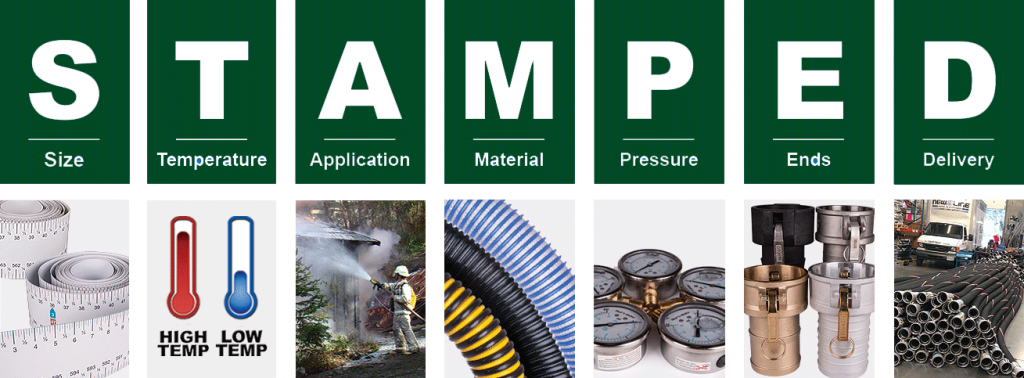
To properly design a metal hose assembly for a particular application, the following design
parameters must be determined. To help remember them, they have been arranged to form the
acronym “S.T.A.M.P.E.D.”
1. SIZE
The diameter of the connections to which the assembly will be installed is needed to provide a proper fit.
This information is required.
2. TEMPERATURE
As the temperature to which the assembly is exposed (internally and externally) increases, the strength of
the assembly’s components decreases. Also, the coldest temperature to which the hose will be exposed
can affect the assembly procedure and/or fitting materials. If you do not provide this information, it will be
assumed that the temperatures are 70° F.
3. APPLICATION
This refers to the configuration in which the assembly is installed. This includes both the dimensions of
the assembly, as well as the details of any movement that the assembly will experience. This information
is necessary to determine assembly length and required flexibility.
4. MEDIA
Identify all chemicals to which the assembly will be exposed, both internally and externally. This is
important since you must be sure the assembly’s components are chemically compatible with the media
going through the hose, as well as the environment in which the hose is to be installed. If no media is
given, it will be assumed that both the media and the external environment are compatible with all of the
available materials for each component.
5. PRESSURE
Identify the internal pressure to which the assembly will be exposed. Also, determine if the pressure is
constant or if there are cycles or spikes. This information is important to determine if the assembly is
strong enough for the application. If no pressure is given it will be assumed that the pressure is low and
there are no pressure surges or spikes.
6. END FITTINGS
Identify the necessary end fittings. This is required since fittings for the assembly must be chosen to
properly fit the mating connections.
7. DYNAMICS
Identify the velocity at which the media will flow through the assembly. Since corrugated metal hose does
not have a smooth interior, rapid media flow can create a resonant frequency that will cause the hose to
vibrate and prematurely fail. If no velocity is given, it will be assumed that the velocity is not fast enough
to affect the assembly’s performance.






